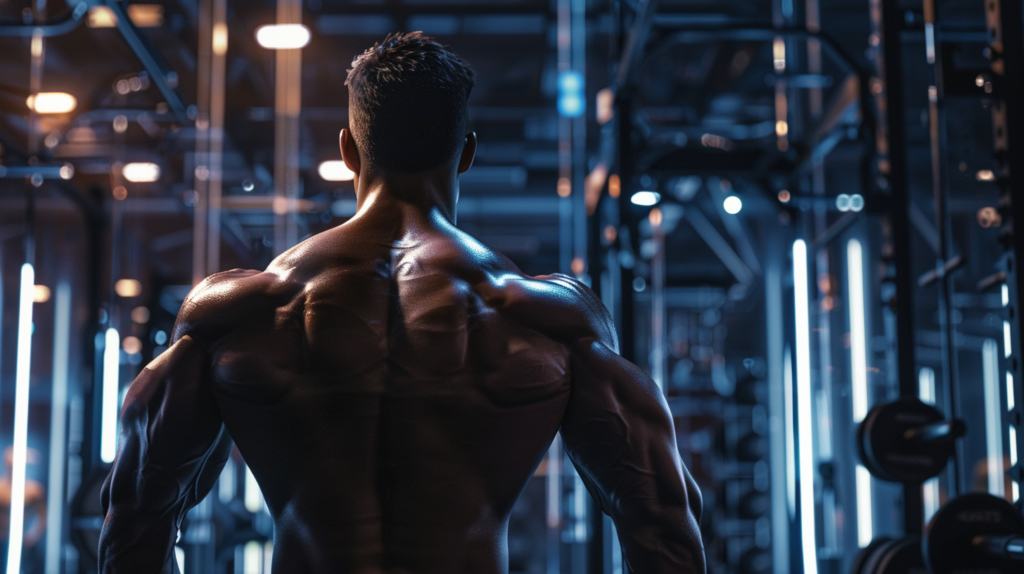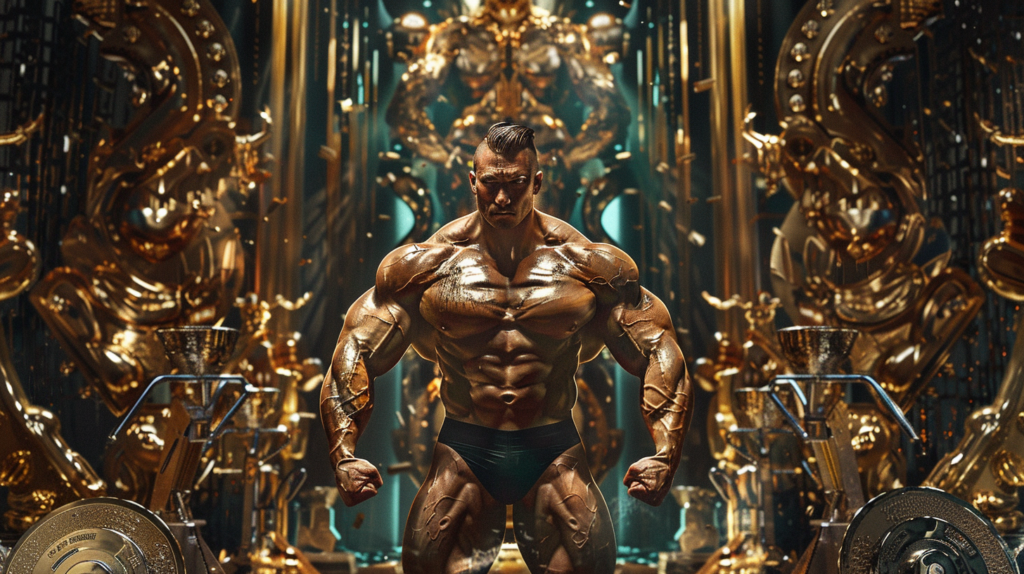When Ronnie Coleman claims to have the best back in bodybuilding history, he’s grounding it in extraordinary development and resilience. Throughout his career, he faced 13 back surgeries yet still showcased unparalleled thickness and width, especially in iconic poses like the rear lat spread. His unique training techniques, including heavy deadlifts and varied grips, pushed his back to new levels of strength. With the rising competition in the sport, Coleman’s influence on back development remains profound. If you’re curious about his training innovations and their impact, there’s much more to uncover about his athletic legacy.
Key Takeaways
- Ronnie Coleman’s back development is renowned for its extraordinary thickness and width, making it a benchmark in bodybuilding.
- Iconic poses like the rear lat spread consistently showcased his impressive back aesthetics to judges.
- Despite enduring 13 back surgeries, Coleman demonstrated remarkable resilience, further solidifying his claim to the best back.
- His innovative training techniques, particularly in deadlifting, contributed significantly to his unmatched back strength and muscularity.
- Coleman’s legacy continues to inspire athletes, emphasizing the importance of mastering back development in bodybuilding.
Ronnie Coleman’s Legendary Career

Ronnie Coleman’s legendary career in bodybuilding stands as a monumental tribute to dedication and unparalleled achievement.
I’ve witnessed the incredible transformation that comes from Ronnie’s training—an unwavering commitment to excellence. His championship mindset is contagious; it’s about pushing limits, not just physically but mentally. Each rep, each set, reflects a relentless pursuit of greatness, shaping not just his physique but his entire identity.
Those eight Mr. Olympia titles aren’t mere trophies; they symbolize years of sacrifice and resilience. Ronnie’s ability to lift extraordinary weights, like that 800-pound deadlift, exemplifies his strength and determination.
His journey inspires countless athletes to embrace their potential, proving that true liberation lies in the commitment to one’s goals, no matter the obstacles.
The Claim to Best Back


The claim to having the best back in bodybuilding history is a bold assertion, one that Ronnie Coleman confidently makes based on his unparalleled development and performance. His back is a masterpiece of muscle aesthetics, dominating back comparisons with competitors.
Here are three key points that solidify his claim:
- Unmatched Development: Coleman’s back showcases extraordinary thickness and width, essential for top-tier bodybuilding.
- Iconic Poses: His rear lat spread and back double biceps consistently leave judges in awe, setting a standard.
- Injury Resilience: Despite enduring 13 back surgeries, his dedication to recovery and training remains unyielding.
Coleman’s legacy inspires countless athletes to pursue their own greatness, proving that mastery of the back can redefine the sport.
Unique Training Techniques

In pursuing excellence in bodybuilding, I’ve discovered that unique training techniques can make a significant difference in building a formidable physique.
For me, mastering deadlift techniques has been essential for enhancing my back development. I focus on varying my grip and stance to target different muscle fibers, ensuring thorough growth.
Additionally, I incorporate heavy deadlifts every other week, allowing my body to adapt and recover effectively. I also emphasize explosive movements to improve overall power.
These approaches not only sculpt my back but also enhance my performance in other lifts. By experimenting with these techniques, I’ve revealed new levels of strength and muscularity that most overlook, proving that innovation in training can lead to extraordinary results.
Current Bodybuilding Landscape

While observing today’s bodybuilding scene, I notice a stark contrast to the eras when dominance was defined by a few exceptional physiques. The current landscape is more fragmented, showcasing a diverse range of talents and physiques.
Here are three key points I find intriguing:
- Emerging Contenders: Current competitors like Hadi Choopan and Nick Walker are reshaping expectations and challenging traditional norms.
- Frequent Title Changes: Unlike previous decades, we can expect more frequent shifts in championship titles, emphasizing parity.
- Physique Comparisons: The emphasis on aesthetics over sheer size means that physique comparisons are more nuanced, highlighting individual artistry.
This evolution invites us to celebrate the variety and creativity within bodybuilding, liberating athletes to express their unique strengths.
Nutrition Strategies for Success

When it comes to achieving peak performance in bodybuilding, nutrition strategies play a vital role.
I’ve always believed that diet optimization is the cornerstone of success. Without a well-structured nutritional plan, even the hardest training can fall short.
I focus on high-protein meals to guarantee muscle recovery, using supplements like creatine and BCAAs to enhance performance. Hydration is equally important; staying properly hydrated fuels my workouts and aids in recovery.
I also implement carb cycling to maintain energy levels, allowing me to push harder during intense training sessions. Regular meal timing keeps my metabolism revved up, which I find essential for achieving my goals.
In bodybuilding, every bite counts, and I make certain mine serve a purpose.
Women’s Powerlifting Achievements

Nutrition strategies are essential for all athletes, but the landscape of women’s powerlifting is also evolving rapidly, showcasing remarkable achievements.
The rise of women in this sport is a powerful indication of women’s empowerment and strength training. Here are three standout accomplishments that highlight this evolution:
- Brittany Schlater’s Record: Achieving a raw deadlift of 273.5 kg (603 lbs) at the 2024 CPU Canadian Nationals, she set an unofficial IPF world record.
- Increased Participation: Women are now competing in greater numbers, breaking barriers and challenging stereotypes.
- Diverse Categories: The expansion of weight classes allows more women to showcase their strength.
As we celebrate these milestones, it’s clear that women’s powerlifting is forging a new path, inspiring future generations to embrace their strength and pursue their passions.
Legacy and Impact on Bodybuilding

Ronnie Coleman’s legacy in bodybuilding is monumental, shaping the sport in ways that resonate even today. His unparalleled achievements, like those eight Mr. Olympia titles, set a benchmark that pushes athletes to innovate and elevate their training.
Coleman didn’t just break records; he redefined what’s possible through relentless dedication and pioneering techniques. His commitment to athlete mentorship has inspired countless competitors to pursue their dreams fearlessly, fostering a community where knowledge is shared freely.
Frequently Asked Questions
What Specific Exercises Does Coleman Recommend for Back Development?
If you want a back that’s as wide as a barn door, you’ve gotta embrace some serious back exercises!
I recommend deadlifts and bent-over rows as essential bodybuilding techniques. These moves target every muscle fiber in your back, promoting growth like you wouldn’t believe.
Don’t forget to incorporate pull-ups and lat pull-downs for those signature wings.
Trust me, commit to these, and you’ll feel liberated in your strength journey!
How Does Coleman’s Back Compare to Modern Bodybuilders’ Backs?
When I compare my back to modern bodybuilders’, I see a stark difference in muscle symmetry and training techniques.
My approach emphasized heavy lifting and unique workouts that sculpted a balanced physique.
Today’s athletes often prioritize aesthetics over sheer strength, which can affect their back development.
While many possess impressive backs, I believe the combination of my rigorous training and commitment to symmetry sets my back apart in bodybuilding history.
What Injuries Has Coleman Faced in His Career?
Throughout my career, I faced numerous injuries that challenged my passion for bodybuilding. Each setback required careful injury recovery and significant training adjustments.
I’ve undergone 13 back surgeries, which tested my limits but also taught me resilience. Adapting my routines allowed me to maintain strength while healing.
Embracing these challenges has shaped my approach to fitness, reminding me that persistence and adaptation are key to success in this demanding sport.
How Has Coleman’s Training Philosophy Evolved Over the Years?
Over the years, my training philosophy‘s transformed from sheer intensity to a more thoughtful approach.
I used to chase numbers relentlessly, but I’ve learned that muscle symmetry and balanced development matter just as much.
Now, I focus on the quality of each lift rather than just the weight.
This shift has liberated my body from the grind, allowing me to appreciate the artistry behind bodybuilding while still pushing my limits.
What Role Does Genetics Play in Coleman’s Back Development?
I’ve often pondered the role of genetics in my back development.
While I’ve worked hard with training and nutrition, I can’t ignore my genetic predisposition. It certainly gave me an edge in achieving ideal muscle symmetry and size.
However, dedication and technique played vital roles too.
I believe anyone can enhance their physique, but understanding our genetic advantages can help us tailor our approach for better results.













